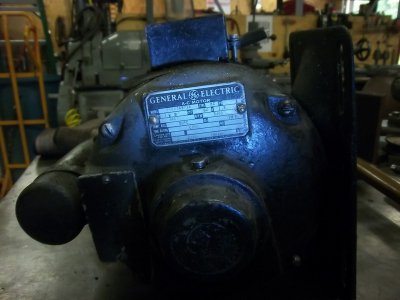First-the 440 they are talking about is a totally different motor than what you have. 220/440 3 phase, not 120/240 1 phase. Please disregard as it does not apply to your motor.
Lets think this out Gents. I have never seen a 2 pole motor (3450 rpm) on a lathe application before. I believe the remark by cluelessnewbie about the original motor somehow getting the wrong name tag/endbell is the best probability. We had a guy in school who used to change labels in motor rewind class just to be cute, at least he thought so.
Cluelessnewbie's other remarks seem right on track also. The calculations for motor speeds are the same I learned so you most probably need a 4 pole motor (1750 rpm) for this application.
I am a bit lost as to why this motor was changed in the first place. If it still runs, plug it in, put the tach on it and check the actual, original speed.
The odd rpm noted in Ray C's reply at 1580 rpm I believe refers to a 4 pole motor operating at 50 cycles. The speeds at the given pole ratios by cluelessnewbie are right on for 60 cycle operation. The applied voltage has nothing to do with speed.
I usually only see 3600 rpm motors on such applications as buffers, surface grinders, pedestal grinders and so on. What are your thoughts on the application?



